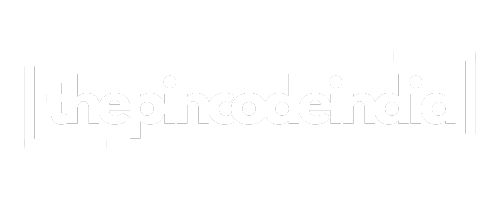In the world of public relations, a press release is often seen as a tool for announcing news. But for businesses focused on the bottom line, this view is too narrow. A commercial press release is a strategic asset designed not only to inform, but also to achieve specific business objectives: generating leads, driving sales, establishing authority, and ultimately contributing directly to revenue growth.
Unlike broader corporate announcements, commercial press releases are inherently tactical. They are crafted with a target audience of both journalists and potential customers in mind, serving as a bridge between media relations and marketing. Understanding the different types of commercial press releases and when to deploy them is essential for any organization looking to leverage PR for tangible results.
This article examines the primary commercial types of press releases, outlining their distinct purposes, optimal structures, and their role in a comprehensive growth strategy.
1. The Product Launch Release: The Classic Revenue Driver
The most recognizable commercial press release is the product launch announcement. Its primary goal is to create awareness and demand for a new offering. However, a successful product launch goes beyond simply stating a product exists.
- Strategic Focus: The narrative must emphasize the problem it solves and the unique value proposition (UVP) that sets it apart from competitors. Why should a customer care? Why should a journalist write about it?
- Key Components:
- Compelling Headline: Focus on the benefit, not just the feature. (e.g., “New Eco-Friendly Packaging Reduces Supply Chain Costs by 15%” instead of “Company X Launches New Packaging”).
- Customer-Centric Lead: Immediately answer the “so what?” for the end-user.
- Solid Quotes: Include a quote from a product manager or CEO that addresses the market need and highlights the innovation behind the solution.
- Strong Call-to-Action (CTA): A direct link to a product page, a sign-up form for a demo, or a special launch offer.
- Commercial Goal: Drive direct traffic to sales channels and generate qualified leads.
2. The Case Study/Success Story Release: Proof and Persuasion
Nothing builds trust like social proof. A case study press release transforms a customer’s success into a powerful marketing tool. This type of release uses real-world data and testimonials to demonstrate efficacy and build credibility.
- Strategic Focus: Showcase measurable results. The story should follow a clear problem-solution-results framework, highlighting how your product or service specifically helped a client achieve their goals.
- Key Components:
- Data-Driven Headline: Lead with the most impressive metric. (e.g., “B2B SaaS Company Helps Client Increase Conversion Rates by 200%”).
- Client Testimonial: A powerful quote from the client is the centerpiece, adding authenticity that corporate messaging cannot.
- Brief Narrative: Outline the challenge, the implementation process, and the outcomes achieved.
- CTA: Encourage readers in similar situations to learn more, often by downloading a full case study or contacting sales.
- Commercial Goal: Overcome objections during the sales cycle, build authority in a specific industry, and attract clients with similar challenges.
3. The Strategic Partnership Announcement: Expanding Reach and Capabilities
When two companies join forces, it’s a significant event that signals growth and expanded market potential. A partnership release aims to leverage the combined audiences and credibility of both organizations.
- Strategic Focus: Highlight the synergy and enhanced value for customers. Explain how the partnership creates a more comprehensive solution than either company could offer alone.
- Key Components:
- Clear Explanation: Clearly state the nature of the partnership (e.g., integration, co-developed product, distribution agreement).
- Quotes from Both Parties: Include statements from leaders of both companies that articulate the shared vision and customer benefits.
- Market Context: Briefly explain why this partnership is relevant now and how it addresses a current market trend or gap.
- CTA: Direct audiences to the new integrated solution or a dedicated partnership landing page.
- Commercial Goal: Tap into a new customer base, enhance the brand’s perceived value, and signal innovation and industry leadership.
4. The Event Announcement: Creating Buzz and Driving Registrations
Whether it’s a webinar, a major conference, or a trade show appearance, an event press release is designed to boost attendance and engagement. It positions the event as a must-attend industry happening.
- Strategic Focus: Sell the value of attendance. What will participants learn, who will they meet, and what unique insights will they gain?
- Key Components:
- All Essential Details: Who, what, when, where, and why. Make it easy for journalists to include all key information.
- Highlight Key Attractions: Mention high-profile speakers, unique session topics, or exclusive networking opportunities.
- Media-Specific Angle: Include a section inviting media attendance and potentially offering interview opportunities with speakers.
- Urgent CTA: A clear link to the registration page, often with a mention of early-bird discounts or limited seating to create urgency.
- Commercial Goal: Generate event registrations (a key lead generation tool), position company executives as thought leaders, and increase brand visibility around a specific topic.
5. The Data-Driven/Research Release: Establishing Thought Leadership
This sophisticated type of commercial release uses original research, survey data, or industry analysis to create news, rather than just reacting to it. By unveiling new insights, a company can position itself as an authority.
- Strategic Focus: Lead with the most surprising or impactful finding. The news is the data itself, which naturally attracts journalists looking for unique stories.
- Key Components:
- Insightful Headline: The headline should be the key finding. (e.g., “Survey Reveals 70% of Remote Workers Feel More Productive, Yet Struggle with Burnout”).
- Clear Methodology: Briefly explain how the research was conducted (e.g., “a survey of 1,000 managers in Q3 2024”) to establish credibility.
- Analysis and Trends: Don’t just present numbers; interpret them. What do these trends mean for the industry?
- Expert Commentary: Include a quote from an internal analyst or executive that provides context and insight into the data.
- Commercial Goal: Earn high-quality media coverage in top-tier publications, build brand authority, and generate leads from professionals seeking deeper industry understanding.
Integrating Commercial Releases into the Marketing Funnel
The power of these releases lies in their placement within the marketing funnel. Product launches and event announcements attract top-of-funnel awareness. Partnership news and case studies build mid-funnel consideration and trust. Meanwhile, data-driven releases can attract potential customers at all stages by providing valuable content.
By strategically selecting the right type of commercial press release for each business objective, companies can transform a simple announcement into a powerful engine for growth.
Frequently Asked Questions (FAQs) About Commercial Press Releases
1. How commercial is too commercial? How do I avoid sounding like an advertisement?
The key is to lead with value and news, not promotion. Instead of saying “Our product is the best on the market,” demonstrate its value through data, like “New Feature X Helps Users Save 5 Hours Per Week.” Focus on the problem you solve for the customer and the evidence that supports your claims (case studies, data). A press release should inform and educate; the commercial outcome is a result of that valuable information, not the primary tone of the message.
2. What is the single most important element of a commercial press release?
The call-to-action (CTA). Unlike a general corporate announcement, every commercial release must have a clear next step for the reader. This could be a link to a product page, a form to download a whitepaper, or a calendar link to book a demo. The CTA is the mechanism that transforms media visibility into a measurable business result. Without it, you’re missing a critical opportunity for conversion.
3. How do I measure the ROI of a commercial press release?
ROI should be tracked through specific, business-oriented metrics beyond just media clippings. Use trackable links (UTM parameters) in your CTA to monitor website traffic and conversions. Correlate release distribution dates with spikes in demo requests, newsletter sign-ups, or sales using promo codes mentioned only in the release. The ultimate goal is to connect PR activity to lead generation and revenue, making its value clear to sales and marketing teams.
4. Can I use a commercial press release for SEO purposes?
Absolutely. Commercial press releases are excellent for SEO. When distributed through reputable newswires, they create high-quality backlinks to your website, thereby improving your domain authority. They also enable you to strategically incorporate target keywords into the headline and body content, thereby increasing your visibility in search engine results for commercial terms such as “best CRM software” or “sustainable packaging solutions.”
5. How often should a company issue commercial press releases?
Quality over quantity is the rule. There is no set frequency. Issue a release when you have legitimate, newsworthy commercial information to share—a significant product update, a compelling case study, or a major partnership. Issuing releases for minor updates can dilute their impact and lead journalists to ignore your future announcements. It’s better to wait for a story with substance that will genuinely interest your audience and the media.
Want to learn more? Read: https://friends-social.com/blogs/70211/A-Guide-to-Easy-Difficult-and-Costly-Press-Releases-in


